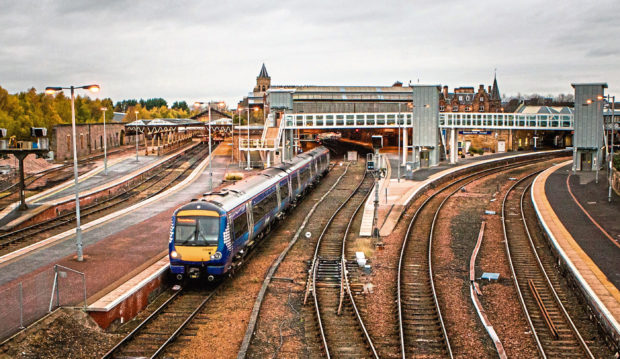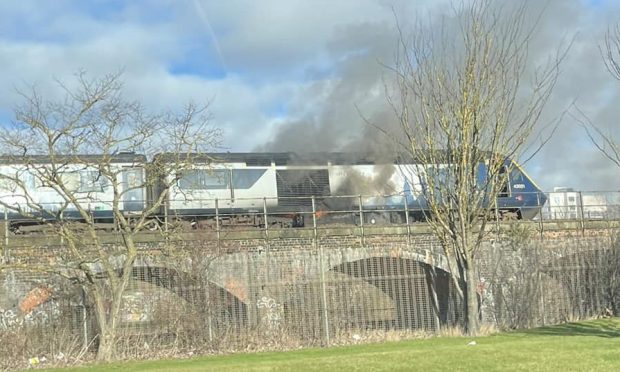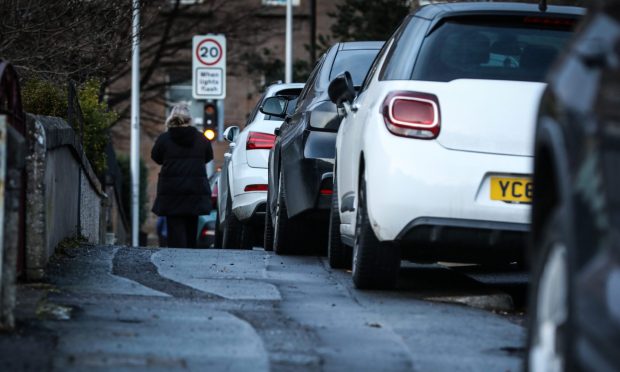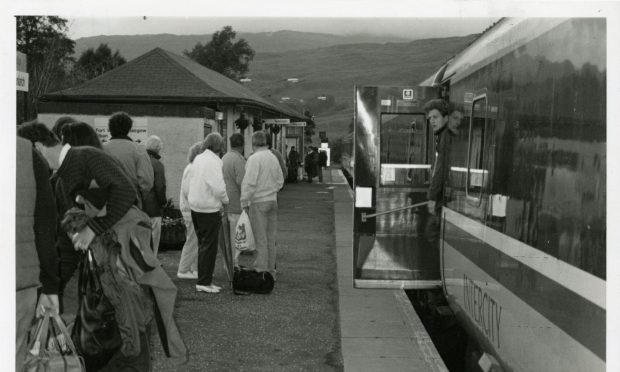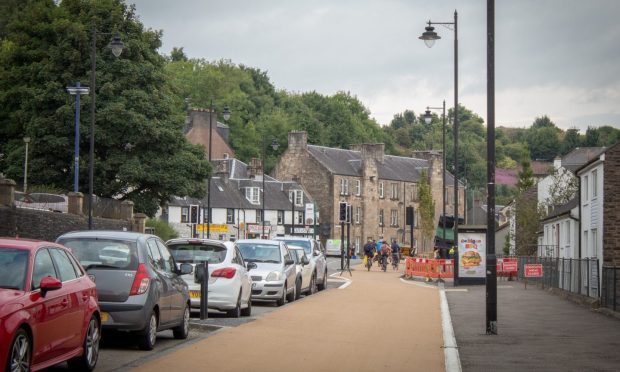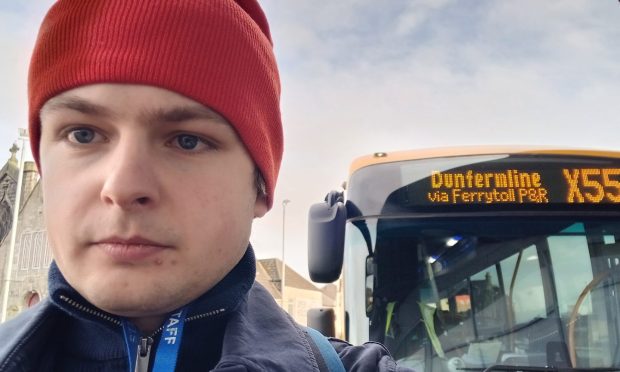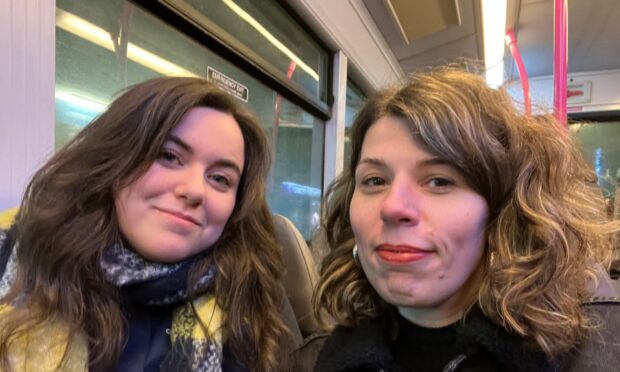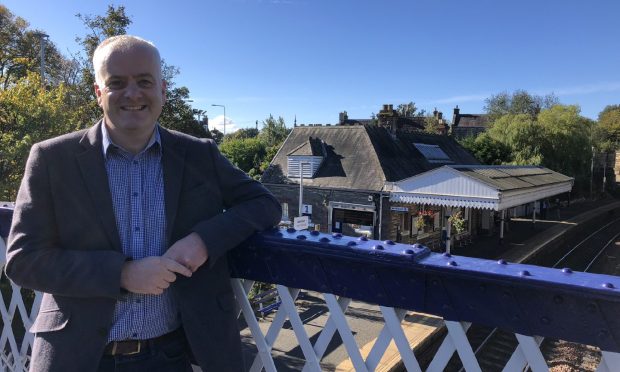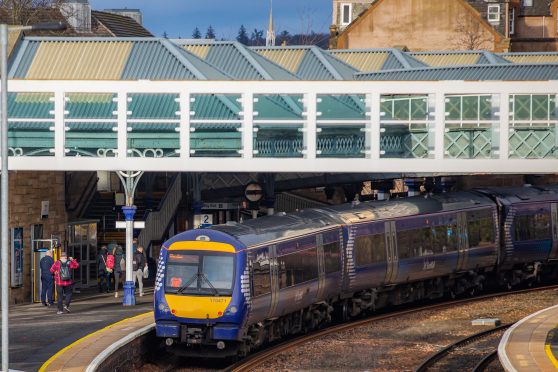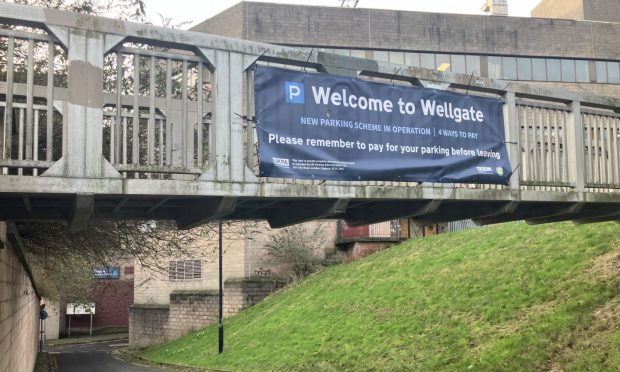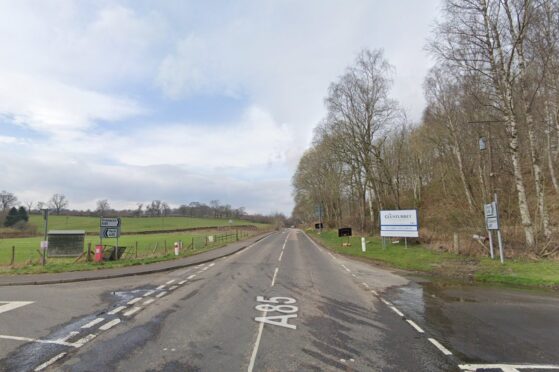Sir, – I recently visited Perth by rail from Glasgow and enjoyed a delightful weekend.
Accommodation in Scone Road was excellent.
The food, drink, atmosphere and weather were all of a very high standard.
I would say how well connected the Fair City is to most of the rest of Scotland.
Strong rail and road links connect big tree county’s nerve centre to Edinburgh, Glasgow, Aberdeen, Dundee and Inverness.
We need to develop our railways to take them forward, allowing them to compete fully when much of our rolling stock becomes obsolete.
High speed trains are now running in their final incarnation after a thorough refurbishment.
The higher power to weight ratio will help maintain performance on the extensive, steep gradients, leaving us surely five to eight years at most to find a dependable, super fast replacement.
We have had calls from the top level at Scotrail to electrify from Glasgow Queen Street (surely also from Edinburgh Waverley) an express line to Perth.
Add a new station at Blackford, perhaps another at Luncarty, and we will draw in much more patronage.
We need an ongoing scheme of redoubling all track from Perth to Aberdeen and Inverness.
Finally we need to initiate the St John’s Link across Central Glasgow allowing through trains from Ayrshire and Renfrewshire directly through the city towards Stirling, Perth and beyond.
Graham Lund.
Dalrymple Street,
Girvan.
Bridie-gate row rumbles on
Sir, – As one who has both eaten and thoroughly enjoyed many a Forfar bridie in my time, it is with some trepidation that I support Councillor Bill Duff’s point of view concerning this particular comestible.
Obesity is a national problem in Scotland – just walk down your local High Street to see it – and the bridie is definitely a fattening food.
I am well aware that the Forfar Bridie has reached almost iconic status in Scotland, but so has the deep fried Mars bar and neither eaten too often is good for you.
When I was a lad at Montrose Academy in the 1950s you hardly ever saw an overweight pupil.
Of course in those days the only fast food outlets we had were fish and chip shops.
Just go out and count the number of these outlets there are in your town today.
So an occasional, I repeat occasional, Forfar Bridie is alright.
Just don’t make a habit of it.
Jim Robertson.
194 High Street,
Montrose.
Intentions were far from clear
Sir, – Last week I saw a National Theatre production of “306 Dusk” in Perth Theatre.
It was a magnificent performance, brilliantly acted and staged, but despite my great interest in the subject, the production left me somewhat cold because it was not easy to understand exactly what the message was which the writer wished to convey.
The tragedies and horrors of the two world wars and subsequent conflicts are well enough known for emotion to be generated by any dramatic representation of them.
However unless one had seen the first two parts of the trilogy, which few would have done, or was aware of the significance of the figure 306 (the number of soldiers shot for “cowardice” and subsequently pardoned in 2006, and only explained by a very small note buried in the cast list of the programme), much of whatever message was intended in the third and final part was far from clear.
I suspect your reviewer had seen both earlier parts and may well have communicated with the writer or director, which would have given him an insight which few members of the audience had.
It is a shame that a talented writer should presume that an audience can deduce his intentions unless they are made more clear in his text.
It is similarly unfortunate that such a distinguished theatre company should not think it appropriate in the circumstances, for the writer’s intentions to be clearly outlined in the programme notes.
Anthony Garrett.
1 Royal Terrace,
Falkland.
Politicians care very deeply
Sir, – In answer to Mr Peter Ovenstone’s letter (October 29) I would like to point out that most politicians, particularly at a local level, are not terribly well paid, and do the job because they want to help the community that they live in.
They are very in touch with their communities and – regardless of political affiliation – look to improve the situation for all residents of their area.
Cllr Harry Coates.
59 Cornhill Road,
Perth.
One must know whom to trust
Sir, – To be fair, Dr Charles Wardrop now presents a more reasonable position (Letters, October 29).
However, he describes the health effects of vehicle pollution as just conjecture.
I prefer the opinions of professors of environmental health, toxicology, paediatrics respiratory and environmental medicine, public health experts, data scientists and statistical professionals, all of whom are on the committee on the medical effects of air pollution (COMEAP), that officially advises the UK Government.
They are, if anything, likely to be conservative in their opinions.
There are also the judges of the UK Supreme Court who have adjudicated that the UK Government is in breach of the law on this issue.
Whether a ban on cars is the right thing to do is not something I have said. I did notice this appeared to be the editorial position taken by the New Scientist.
I would say that the UK Government’s decision to now reduce incentives for the least polluting cars is just perverse.
I do agree with Charles Wardrop’s concern about the hazards of cycling.
It doesn’t help that Scottish Government planning guidance is directly contrary to robust, peer reviewed, journal published science on this issue.
Gordon Pay.
Eden Park,
Cupar.
Turbines are not even turning
Sir, – Yet more subsidies are milked by the wind industry with a record £4.8 million being paid in “constraint payments” on October 8 for them switching off their turbines because there was too much electricity.
Owners received more than £100 million a year not to produce electricity.
The present 3,335 turbines in Scotland is due to increase by another 2,957 and since turbines get priority on the Grid then consumers will see electricity bills rocket, fuel poverty increase and winter deaths escalate.
Clark Cross.
138 Springfield Road,
Linlithgow.
Brexit bumbling bad for Britain
Sir, – It appears that long-gone are the heady days post-Brexit when the secretary of state for international trade, Dr Liam Fox, declared that an EU trade deal would be “one of the easiest in human history” and nations would be queueing up to strike deals with the UK.
Indeed, David Davis, former secretary of state for exiting the EU, famously declared that a raft of new trade deals would be in place in March 2019
In the last few days other countries – those same ones apparently so desperate to strike deals with a resurgent UK – blocked the UK’s bid to fast-track its entry to the World Trade Organisation (WTO), the intergovernmental body that regulates international trade and comprises 164 countries.
The UK is a full member of the WTO but its terms of membership are tied up with the European Union, and it needs to have an independent membership document that sets out the terms of its trade after leaving the bloc in March 2019.
Instead of being able, as was proposed, to simply cut and paste the EU text into a new WTO agreement covering the UK, the UK will now face a longer path toward entering the WTO, resulting in a lengthy period of negotiations which could take years.
It also means that other countries can now ask the UK to make concessions in order to join.
Like so many other Brexiteer promises, it appears that the pledge of a UK boldly striking trade deals across the world with nations desperately lining up to do so, is no more than a myth.
Alex Orr.
2/3 Marchmont Road,
Edinburgh.
